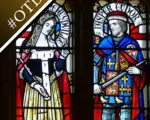
On this day in Tudor history, 18th May, Catherine Woodville, Duchess of Buckingham and Bedford, sister of Elizabeth Woodville, died, and scholar William Thomas was executed for treason after being implicated in Wyatt’s Rebellion…
[Read More...]
On this day in Tudor history, 18th May, Catherine Woodville, Duchess of Buckingham and Bedford, sister of Elizabeth Woodville, died, and scholar William Thomas was executed for treason after being implicated in Wyatt’s Rebellion…
[Read More...]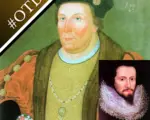
On this day in Tudor history, 17th May, Edward Stafford, Duke of Buckingham, was executed for treason; five men were executed as traitors for their involvement with Queen Anne Boleyn; and Elizabethan spy Anthony Bacon was buried…
[Read More...]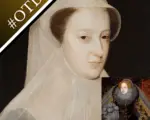
On this day in Tudor history, 16th May, Sir Thomas More resigned as Lord Chancellor; Archbishop Cranmer visited an imprisoned Queen Anne Boleyn; Mary, Queen of Scots, landed on English soil; and William Adams, the inspiration for Shōgun’s John Blackthrone, died…
[Read More...]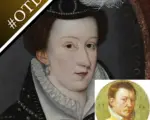
On this day in Tudor history, Queen Anne Boleyn and her brother, George Boleyn, Lord Rochford, were tried for high treason; Baron Darcy and Baron Hussey were tried for treason; and Mary, Queen of Scots married for a third time…
[Read More...]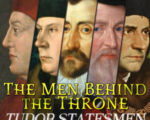
I’ve just opened registration for my forthcoming online event “The Men Behind the Throne: Tudor Statesmen”! There’s an early bird discount until 31 May and our very first zoom call discussion, which is on Thomas Cromwell, is this Friday, 17th May!
In my interactive and completely online 11-day event, which starts properly on 30th June, I’ll be joined by historians Dr Joanne Paul, Caroline Angus, Melita Thomas, Phil Roberts and Dr Hannah Coates. We’ll be delving into the captivating lives of the Tudor statesmen who shaped England’s history alongside iconic rulers like Henry VII, Henry VIII, Edward VI, Mary I, and Elizabeth I.
Through video talks and zoom Q&A sessions with speakers – where you’ll be video chatting with the historian! – you’ll gain a fresh understanding of the roles and contributions of prominent Tudor statesmen, and insights into the political landscape of Tudor England, including court intrigues, power struggles, and the dynamics between monarchs and their advisors.
[Read More...]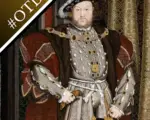
On this day in Tudor history, Henry VIII was suffering badly with his legs; the Creeping Parliament was held by James VI’s regent, the Earl of Lennox; and Lady Helena Gorges (née Snakenborg) was buried in Salisbury Cathedral…
[Read More...]
On this day in Tudor history, 13th May, Mary Tudor, dowager Queen of France, married Charles Brandon, Duke of Suffolk; Henry Percy denied a precontract with Queen Anne Boleyn; and Mary, Queen of Scots’ forces were defeated in battle…
[Read More...]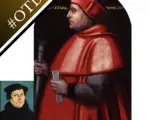
On this day in Tudor history, Cardinal Wolsey presided over a book burning; four men were tried for sleeping with and plotting with Queen Anne Boleyn; Baron Hussey was charged with treason; and a friar refused to recant his allegiance to Rome…
[Read More...]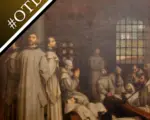
On this day in Tudor history, 11th May, Henry VIII flung accusations at the clergy; the Grand Jury of Kent met in the fall of Anne Boleyn; two Carthusian monks were hanged in chains; and royal physician Dr Thomas Wendy died…
[Read More...]
Join me as I delve into the fascinating world of proxy weddings, from historical royal unions to modern-day ceremonies. Discover the story behind Marie de Guise and King James V of Scotland’s proxy wedding, a common practice for diplomatic unions among European ruling houses.
Learn about notable proxy marriages throughout history, including Catherine of Aragon and Arthur Tudor, Margaret Tudor and King James IV of Scotland, and Princess Mary Tudor and King Louis XII of France. Uncover the unique customs and rituals associated with these proxy weddings, from symbolic gestures to mock consummations.
[Read More...]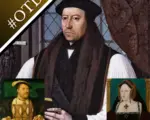
On this day in Tudor history, 10th May, a special court met to rule on Henry VIII’s Great Matter; the Grand Jury of Middlesex met to decide on whether Queen Anne Boleyn and five courtiers should be tried; the Duke of Norfolk’s secretary committed suicide; and an expedition to find the Northeast Passage set off…
[Read More...]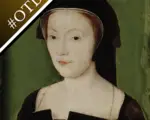
On this day in Tudor history, 9th May, Henry VII’s remains were taken to St Paul’s Cathedral; James V of Scotland and Marie de Guise were married by proxy; and William Bradford, founder of the Plymouth Colony, died…
[Read More...]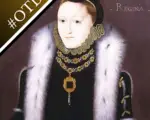
On this day in Tudor history, 8th May, herald and chronicler Charles Wriothesley was born; there was war panic in London; and Elizabeth I gave her approval to the Acts of Uniformity and Supremacy…
[Read More...]
Tim and I have just finished watching the new series “Shardlake” on Disney+. It’s based on C J Sansom’s historical novel, “Dissolution”, the first of his Shardlake series featuring 16th century lawyer and sleuth Matthew Shardlake.
It’s a series of books we’ve both enjoyed so we thought Tim could share his review of the book and then we’d have an off-the-cuff chat about the series…
[Read More...]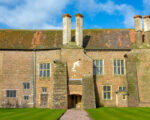
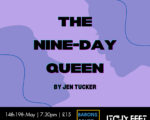
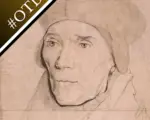
On this day in Tudor history, 7th May, an imprisoned Bishop John Fisher was tricked into saying something that would lead to his execution; Queen Anne Boleyn’s chaplain was searched; English troops suffered heavy losses at the Siege of Leith; and the Earl of Bothwell got divorced…
[Read More...]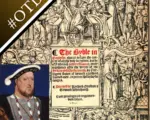
On this day in history, Edmund Beaufort was executed, bringing the male Beaufort line to an end; Sir James Tyrell, a man who allegedly confessed to murdering the Princes in the Tower, was executed; Anne Boleyn allegedly wrote a letter from the Tower; and Henry VIII ordered The Great Bible “to be had in every churche”…
[Read More...]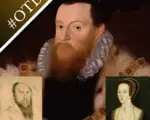
On this day in Tudor history, 5th May, Sir Thomas Wyatt and Richard Page were arrested in the fall of Anne Boleyn; Agnes Tilney, Dowager Duchess of Norfolk, was pardoned and released following the fall of her step-granddaughter, Catherine Howard; a religious radical was executed in Calais; and Lord Deputy of Ireland Sir Henry Sidney died…
[Read More...]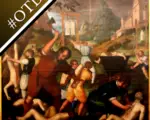
On this day in Tudor history, 4th May, claimant Edmund de la Pole was executed; four monks and a priest were executed for rejecting royal supremacy; an imprisoned George Boleyn received a letter and two more men joined him in the Tower; and Bess of Hardwick was buried…
[Read More...]
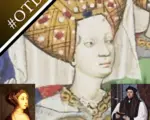
On this day in history, 3rd May, Cecily Neville, Duchess of York and mother of Edward IV and Richard III, was born; Archbishop Cranmer wrote of his shock about the investigation into Anne Boleyn; Sir Edward Rogers, a man who served three Tudor monarchs, died; and poet and farmer Thomas Tusser died…
[Read More...]
On this day in Tudor history, 2nd May, Queen Anne Boleyn and her brother, Lord Rochford, were arrested; Anabaptist Joan Bocher was burnt in Edward VI’s reign; and Mary, Queen of Scots escaped from Lochleven Castle…
[Read More...]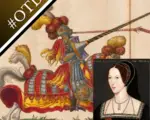
On this day in Tudor history, May Day, the Evil May Day Riot took place in London; Henry VIII left the 1536 May Day joust abruptly and never saw Anne Boleyn again; and Sir Edmund Knyvet, a hot-tempered courtier, died…
[Read More...]
On this day in Tudor history, 30th April, lawyer and Protestant James Bainham was burnt at the stake; court musician Mark Smeaton was arrested in the fall of Anne Boleyn; Lord Chancellor Thomas Audley died; and Sir John Puckering died…
[Read More...]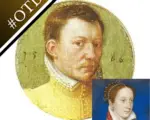
On this day in Tudor history, 29th April, William Dacre, the only man to be acquitted in Henry VIII’s reign, was born; Queen Anne Boleyn had an altercation with groom of the Stool Sir Henry Norris; Lady Jean Gordon started divorce proceedings against the Earl of Bothwell; and Sir Dru Drury died…
[Read More...]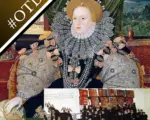
On this day in Tudor history, 28th April, just a few days before Anne Boleyn’s arrest, the royal council was meeting frequently; a man involved in the falls of two queens died; an 82-year-old priest was executed; and Elizabeth I’s funeral took place…
[Read More...]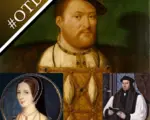
On this day in Tudor history, 27th April, writs were issued summoning Parliament and a bishop consulted about Henry VIII abandoning Anne Boleyn; Elizabethan lawyer and judge David Lewis died; and adventurer Sir Edward Michelborne died…
[Read More...]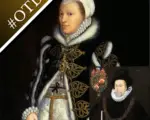
On this day in Tudor history, 26th April, Queen Anne Boleyn’s chaplain made a promise to the queen; Catherine Carey, daughter of Mary Boleyn, married Francis Knollys; and playwright William Shakespeare was baptised…
[Read More...]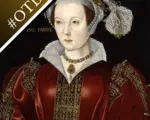
On this day in Tudor history, 25th April, Henry VIII wrote of his hopes for his future with Anne Boleyn, the woman he’d soon set aside; Thomas Stafford proclaimed himself “Protector of the Realm”; Catherine Parr’s translation of “Psalms or Prayers” was published anonymously; and St Mark’s Day was celebrated…
[Read More...]